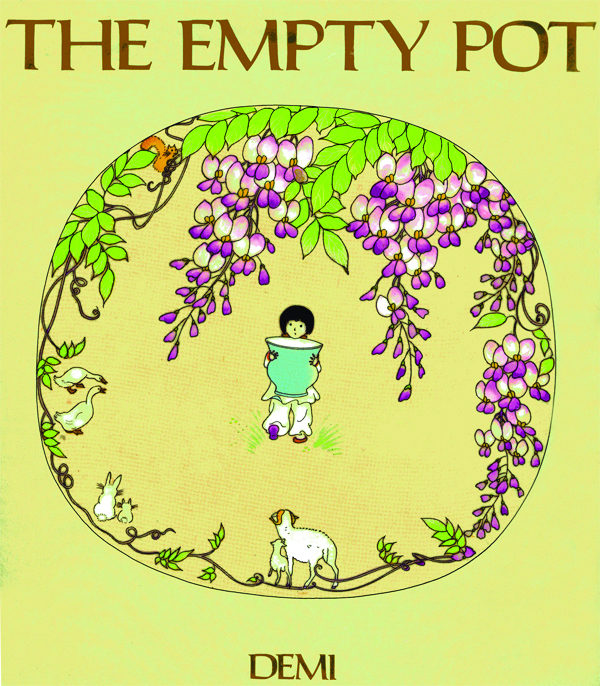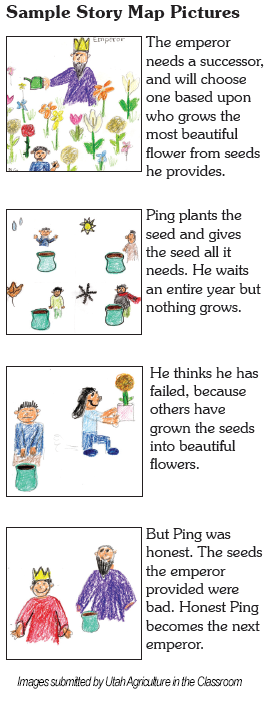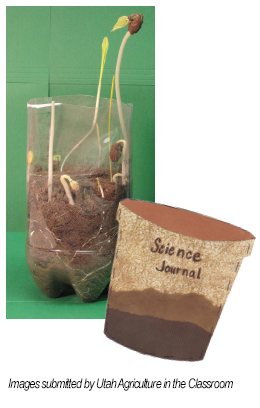Growing Plants in Science and Literature, More Than an Empty Pot (Grades 3-5)
Students use the story of The Empty Pot to explore literature and science, practicing story mapping and examining the needs of plants and the importance of soil and water. Like the characters in the story, students plant and observe the growth of seeds.
Background
Lesson Activities
Recommended Companion Resources
Credits
Author
Vanae Morris | Utah Agriculture in the Classroom
Standards
Indiana Content Area Standards
-
English Language Arts.Grade 3.RL.1
Read and comprehend a variety of literature within a range of complexity appropriate for grades 2-3. By the end of grade 3, students interact with texts proficiently and independently.
- Key Ideas and Textual Support.3.RL.2.2: Recount folktales, fables, and tall tales from diverse cultures; identify the themes in these works. Further guidance for support will be provided in the Literacy Framework.
-
English Language Arts.Grade 3.SL.1
Listen actively and adjust the use of spoken language (e.g., conventions, style, vocabulary) to communicate effectively with a variety of audiences and for different purposes.
- Discussion and Collaboration.3.SL.2.1: Engage effectively in a range of collaborative discussions (one-on-one, in groups, and teacher-led) on grade- appropriate topics and texts, building on others ideas and expressing personal ideas clearly.
-
English Language Arts.Grade 4.RL.1
Read and comprehend a variety of literature within a range of complexity appropriate for grades 4-5. By the end of grade 4, students interact with texts proficiently and independently at the low end of the range and with scaffolding as needed at the high end.
- Key Ideas and Textual Support.4.RL.2.2: Paraphrase or summarize the main events in a story, myth, legend, or novel; identify the theme and provide evidence for the interpretation.
-
English Language Arts.Grade 4.SL.1
Listen actively and adjust the use of spoken language (e.g., conventions, style, vocabulary) to communicate effectively with a variety of audiences and for different purposes.
- Discussion and Collaboration.4.SL.2.1: Engage effectively in a range of collaborative discussions (one-on-one, in groups, and teacher-led) on grade- appropriate topics and texts, building on others ideas and expressing personal ideas clearly.
-
English Language Arts.Grade 5.RL.1
Read and comprehend a variety of literature within a range of complexity appropriate for grades 4-5. By the end of grade 5, students interact with texts proficiently and independently.
- Key Ideas and Textual Support.5.RL.2.2: Determine the theme of a story, play, or poem from details in the text, including how characters respond to challenges or how the speaker in a poem reflects upon a topic; summarize the text.
-
English Language Arts.Grade 5.SL.1
Listen actively and adjust the use of spoken language (e.g., conventions, style, vocabulary) to communicate effectively with a variety of audiences and for different purposes.
- Discussion and Collaboration.5.SL.2.1: Engage effectively in a range of collaborative discussions (one-on-one, in groups, and teacher-led) on grade- appropriate topics and texts, building on others ideas and expressing personal ideas clearly.
 Prior to starting the activities for this lesson, introduce the students to the story of The Empty Pot. Hold up the book and activate prior knowledge by asking the students to describe what they see on the cover. Discuss the artwork, the concept of a folktale, the depiction of the boy on the cover, and some general cultural aspects of China.
Prior to starting the activities for this lesson, introduce the students to the story of The Empty Pot. Hold up the book and activate prior knowledge by asking the students to describe what they see on the cover. Discuss the artwork, the concept of a folktale, the depiction of the boy on the cover, and some general cultural aspects of China. Discuss the setting, main characters, and problem presented in the story and chart the sequence of events. You may wish to use the
Discuss the setting, main characters, and problem presented in the story and chart the sequence of events. You may wish to use the  After the experiment is completed, review with the students the things needed for plant growth:
After the experiment is completed, review with the students the things needed for plant growth: